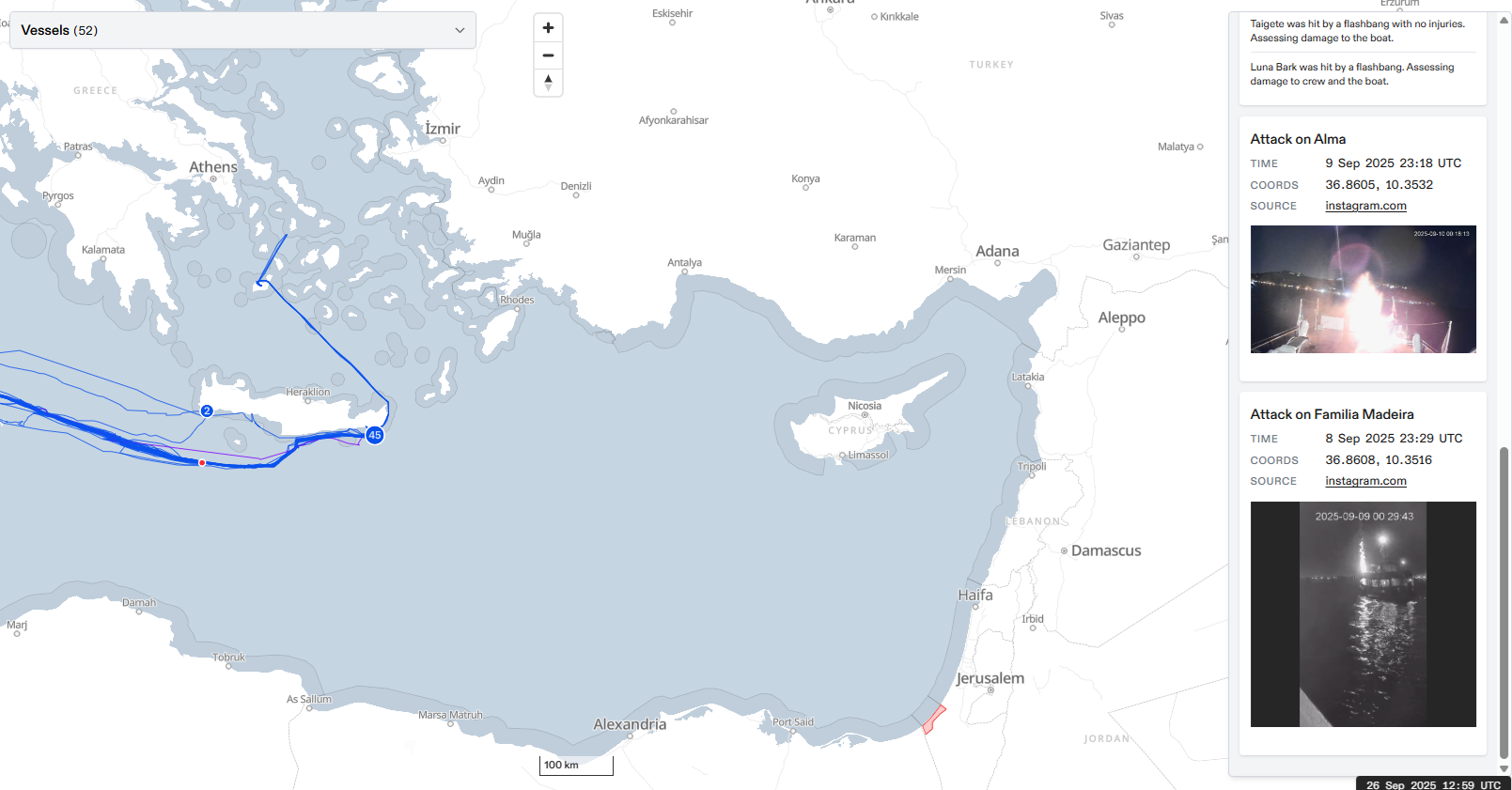Previously posted on Medium
How It Began
The Global Sumud Flotilla set sail in September 2025, organized by international activists, NGOs, and humanitarian groups with a single mission: to break Israel’s naval blockade of Gaza and deliver vital aid to its besieged population. “Sumud,” meaning steadfastness in Arabic, reflects the determination of the participants to challenge the blockade through nonviolent resistance at sea.
From Climate to Gaza: Greta Thunberg’s Stand with the Flotilla
Among the most prominent figures aboard the flotilla is Swedish activist Greta Thunberg, whose global profile has amplified attention on the mission. Though she stepped down from an official steering role earlier in September, she remains at sea with the fleet, using her platform to demand that recognition of Palestine be matched by concrete international action. Her speeches and posts have pressed world leaders to uphold humanitarian law, while her very presence ensures the flotilla cannot be ignored.
Major Events Along the Journey
- September 8–9: The flotilla reported drone harassment and attacks using flashbang devices against vessels such as Familia Madeira and Alma. No casualties, but damage was sustained.
- September 15–20: Organizers reported GPS jamming, communication disruptions, and surveillance drones shadowing their route.
- September 25: Spain, Italy, and Greece confirmed limited support. Spain and Italy pledged to safeguard their citizens aboard but stopped short of promising armed escort. Greece guaranteed safe passage through its waters.
- September 26 (today): As of 9:00 a.m. EST, flotilla vessels are clustered near Crete, marked at position 45 on the tracker. The fleet has not yet passed Cyprus into the eastern Mediterranean.
Leaders’ Remarks
- Israel: Officials have declared the flotilla will not be allowed to reach Gaza, citing the longstanding naval blockade as a matter of “national security.”
- Spain & Italy: Foreign ministers stressed the flotilla poses “no threat to Israel” and emphasized its purely humanitarian purpose.
- Organizers: The flotilla coalition insists that international law protects their right to deliver aid and that stopping them would represent another violation of humanitarian principles.
Current Situation & Planned Arrival
From Crete, the flotilla faces roughly 380–400 nautical miles to Gaza. Based on reported sailing speeds, organizers estimated arrival early next week (Sept 29–30). However, mechanical delays and potential Israeli interception may alter the timeline.
How Far Into Gaza?
The flotilla’s stated goal is to reach Gaza City’s port, deep inside the blockaded zone. If Israel intercepts the ships, they are likely to be stopped well before entering Gazan waters (20 nautical miles off the coast, the official blockade enforcement line). The flotilla’s success therefore depends not only on distance covered but on the willingness of states like Spain, Italy, or Turkey to challenge Israel’s enforcement.
The Global Sumud Flotilla embodies both hope and uncertainty. Its journey highlights the determination of activists to challenge a blockade that has defined life in Gaza for over a decade, while also underscoring the risks of confrontation at sea. Whether the ships are allowed to dock in Gaza or are stopped before reaching their destination, this voyage has already forced the world’s attention back onto the question of humanitarian access and the rights of a people under siege. The coming days will determine whether steadfastness at sea can overcome the barriers on land.
References here

